To establish a successful presence in the digital space, it is essential to closely observe and understand the competition. This way, you can plan targeted strategic steps and optimize your online presence. In this guide, I will show you how to conduct a well-founded competitive analysis based on the content of the tutorial “Making Money with the AdSense Formula – 4.5 Analyzing the Competition: Practice”.
Key Insights
- Use keyword relevance and visibility for analysis.
- Pay attention to the page structure, titles, and meta data of your competitors.
- Utilize various tools for a comprehensive website analysis.
Step-by-Step Guide to Competitive Analysis
1. Keyword Research
The first step is to identify the relevant keywords associated with your topic. An example discussed in the video is the keyword “testamentmuster” (will template). Use search engines like Google to input the keyword and observe the initial results.
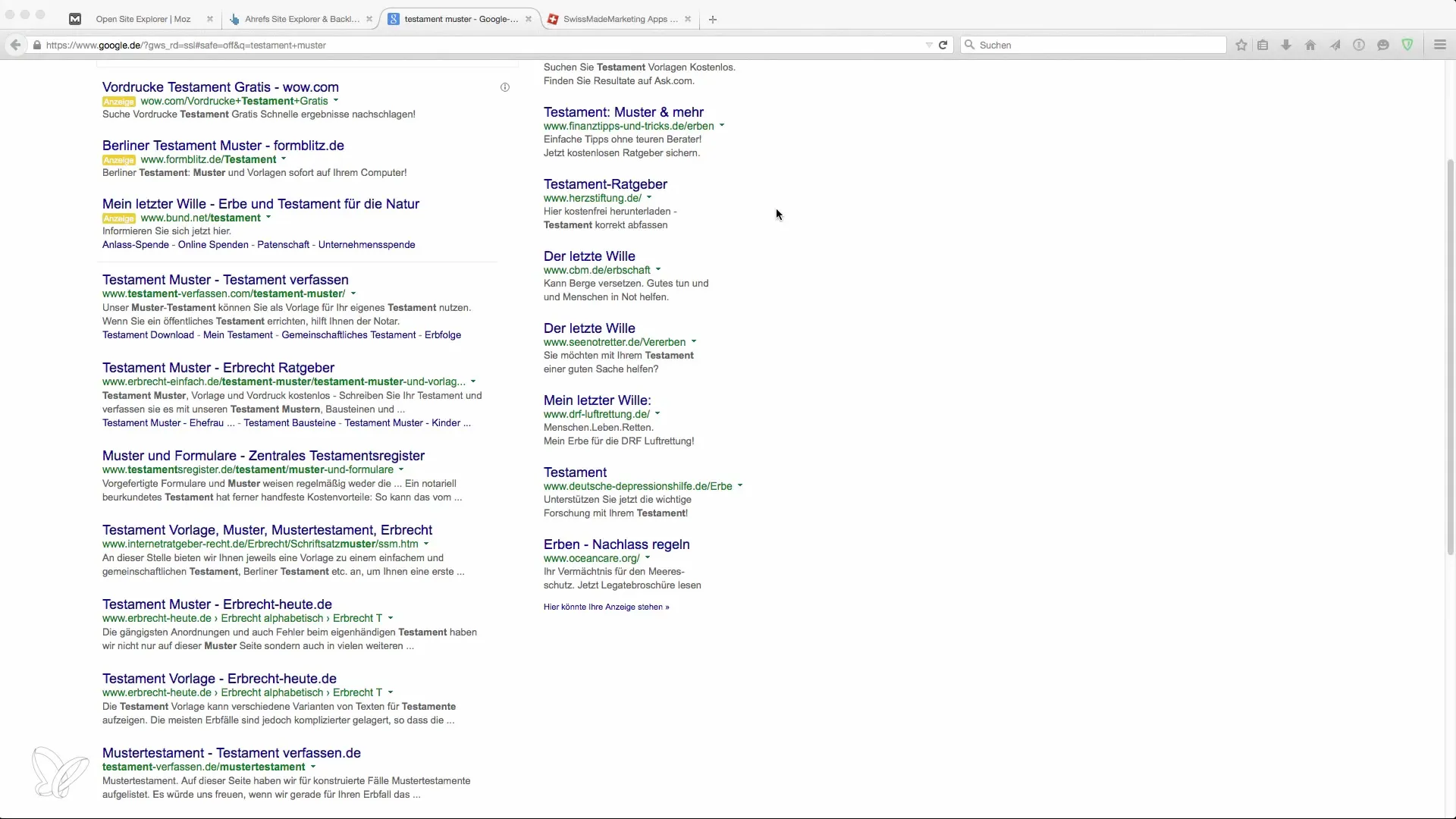
2. SERP Analysis (Search Engine Results Page)
Once you have entered the keyword and have the search results, pay attention to which pages are ranked and in what order. It is crucial to consider both the organic results and the ads. From this, you can already draw initial conclusions about the optimization of your competitors.
3. Review of Meta Information
Click on the various results and examine the meta titles and meta descriptions. A well-crafted title is often highlighted and usually displayed in bold, underlining its importance. Make sure the keyword is embedded in the title and description.
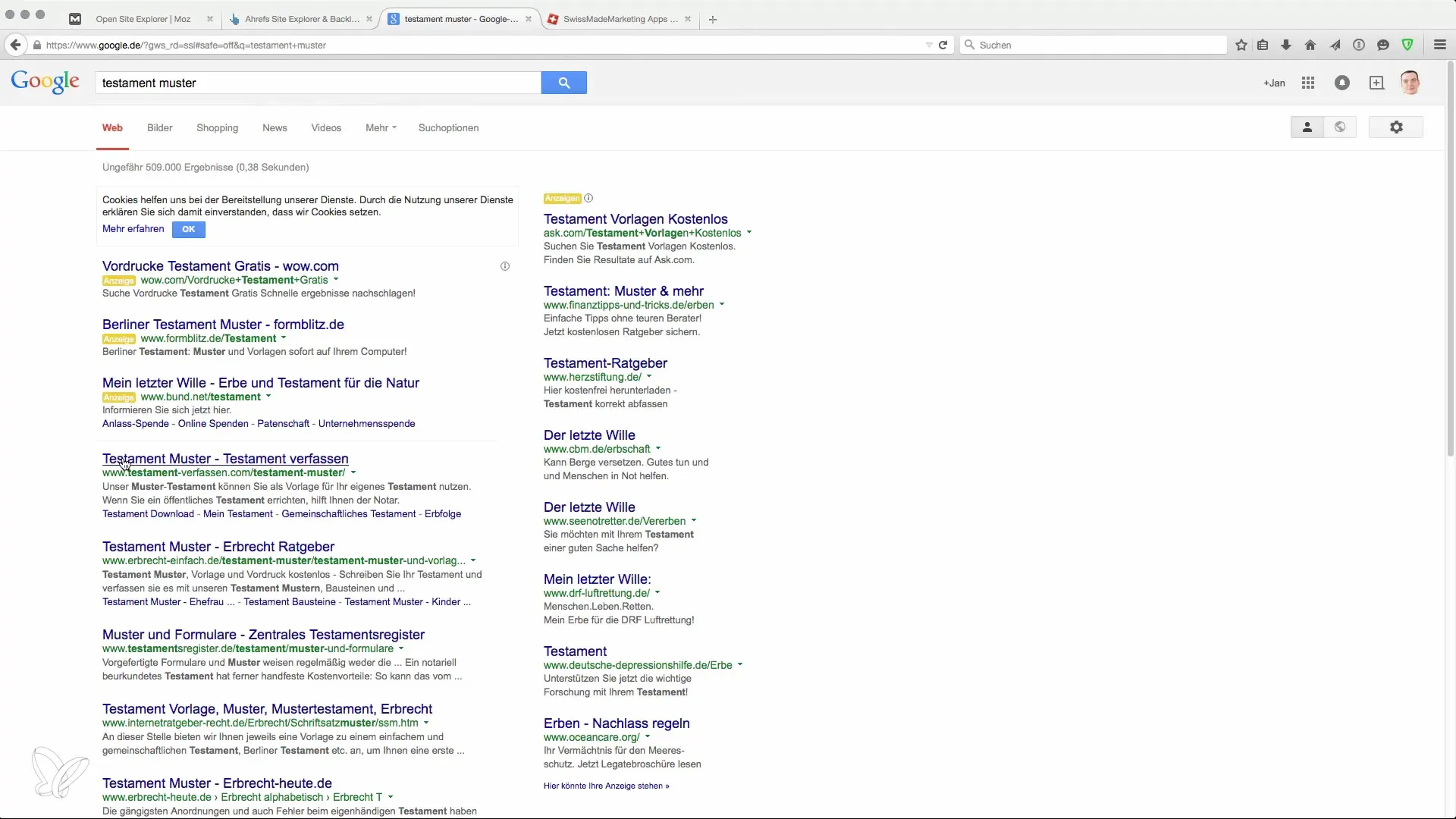
4. Examination of Website Structure
Use tools like Firefox or Chrome to analyze the website structure. Focus on how content is structured (e.g., main heading H1) and whether the keywords are sensibly integrated into the text. It is noteworthy that the keyword “testamentmuster” is prominently placed in the title.
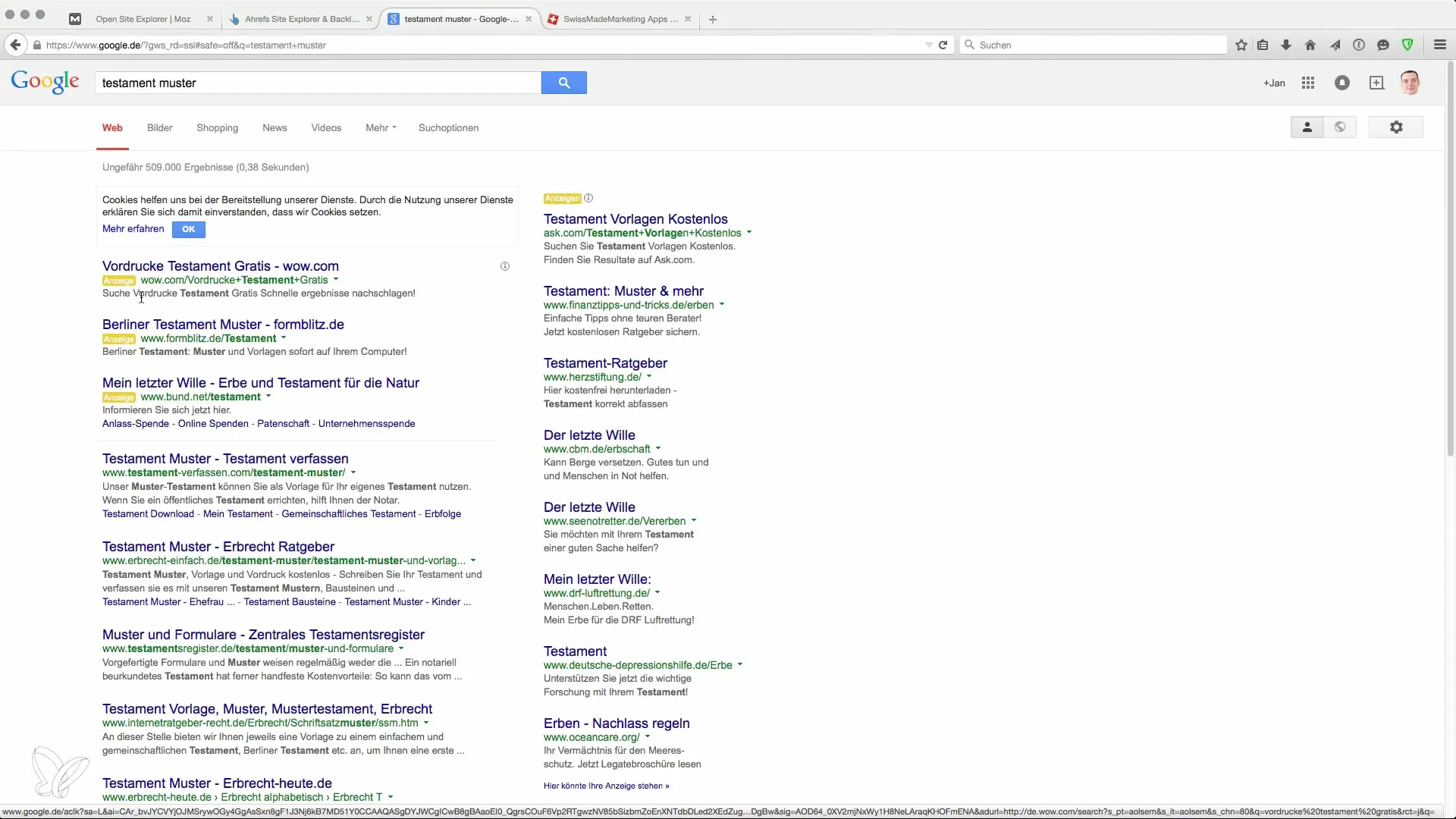
5. Content Analysis
Analyze the content of the websites. Is there enough text to comprehensively address the topic? Ensure that the keyword is not excessively repeated. Sometimes, a single mention in a relevant context is sufficient to perform well in rankings.
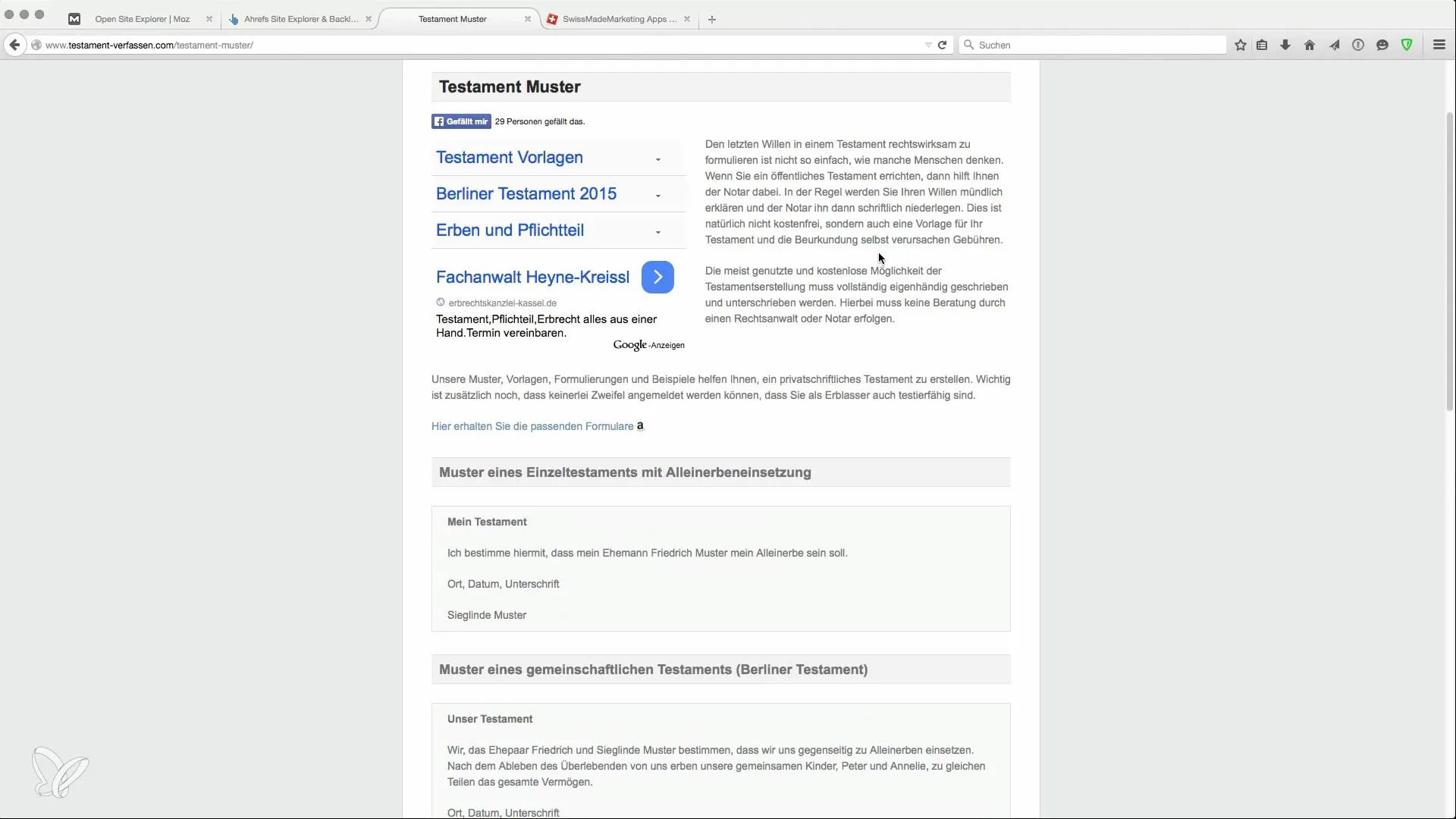
6. Use of SEO Tools
Utilize online tools like “SEO Analyzer” and “Open Site Explorer”. These tools provide detailed analyses of websites and their SEO factors, such as titles, H1 headings, and text lengths. These technical aspects are crucial for better assessing the competition.
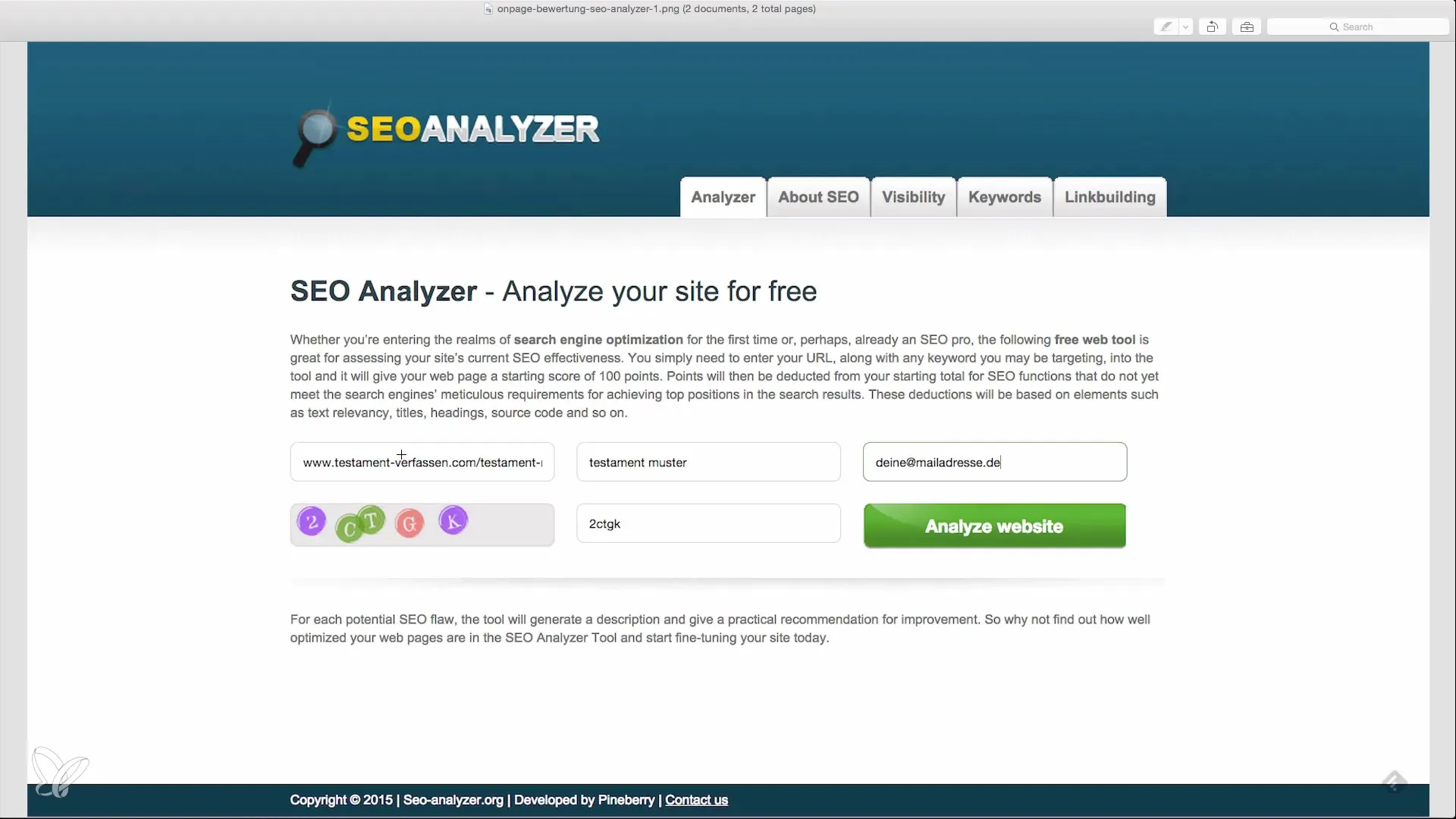
7. Backlink Analysis
A detailed analysis of backlinks provides you insights into the authority of your competitors’ websites. Tools like “Open Site Explorer” help you check the number and quality of backlinks to the domain. This can show you where there is potential for improvement for your own site.
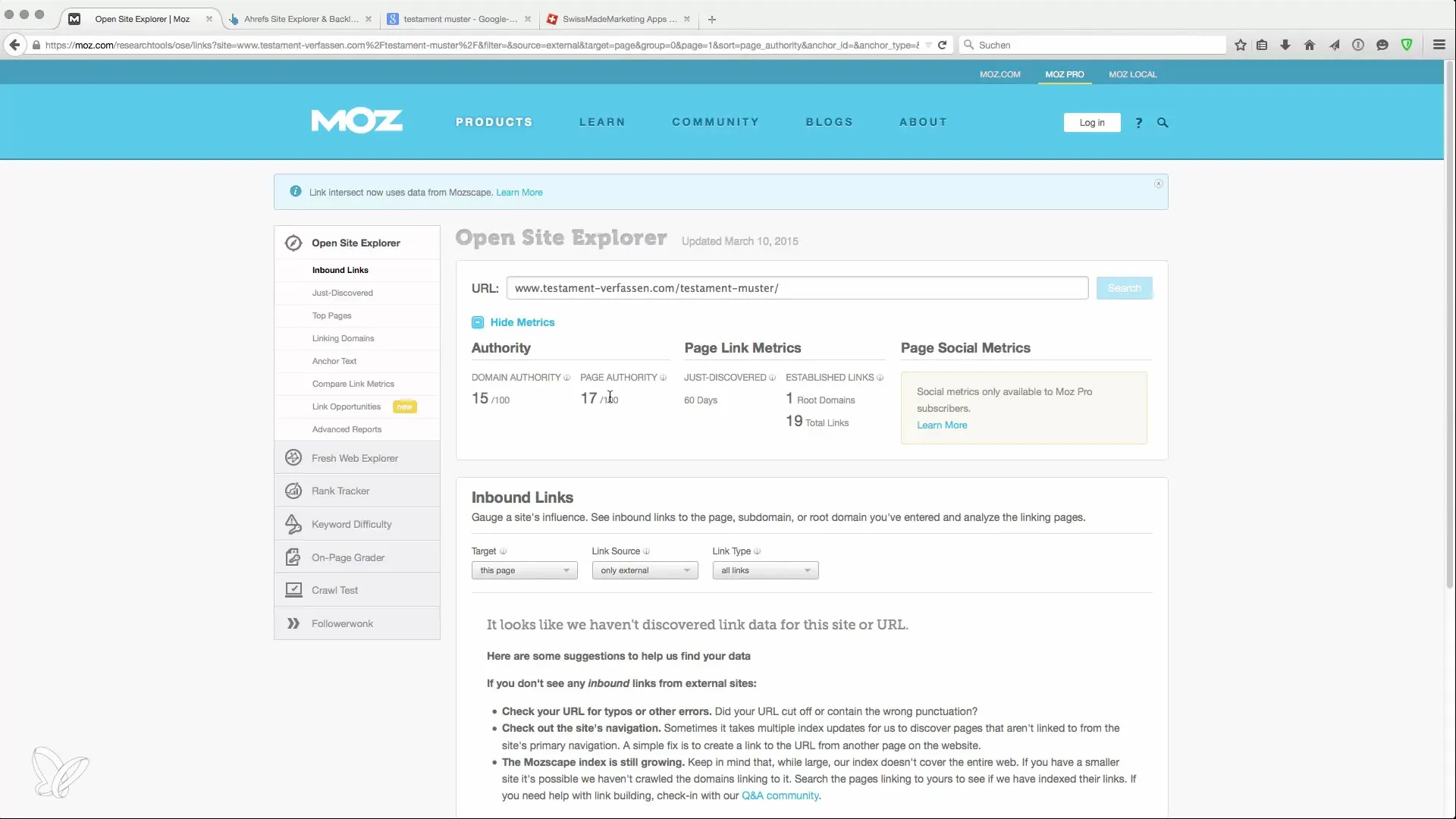
8. Competitor Assessment
Evaluate the competition based on SEO metrics and recognize how competitive the chosen keyword is. Tools like Moz or Seo Cockpit provide comprehensive data that can help you determine the difficulty level of optimization.
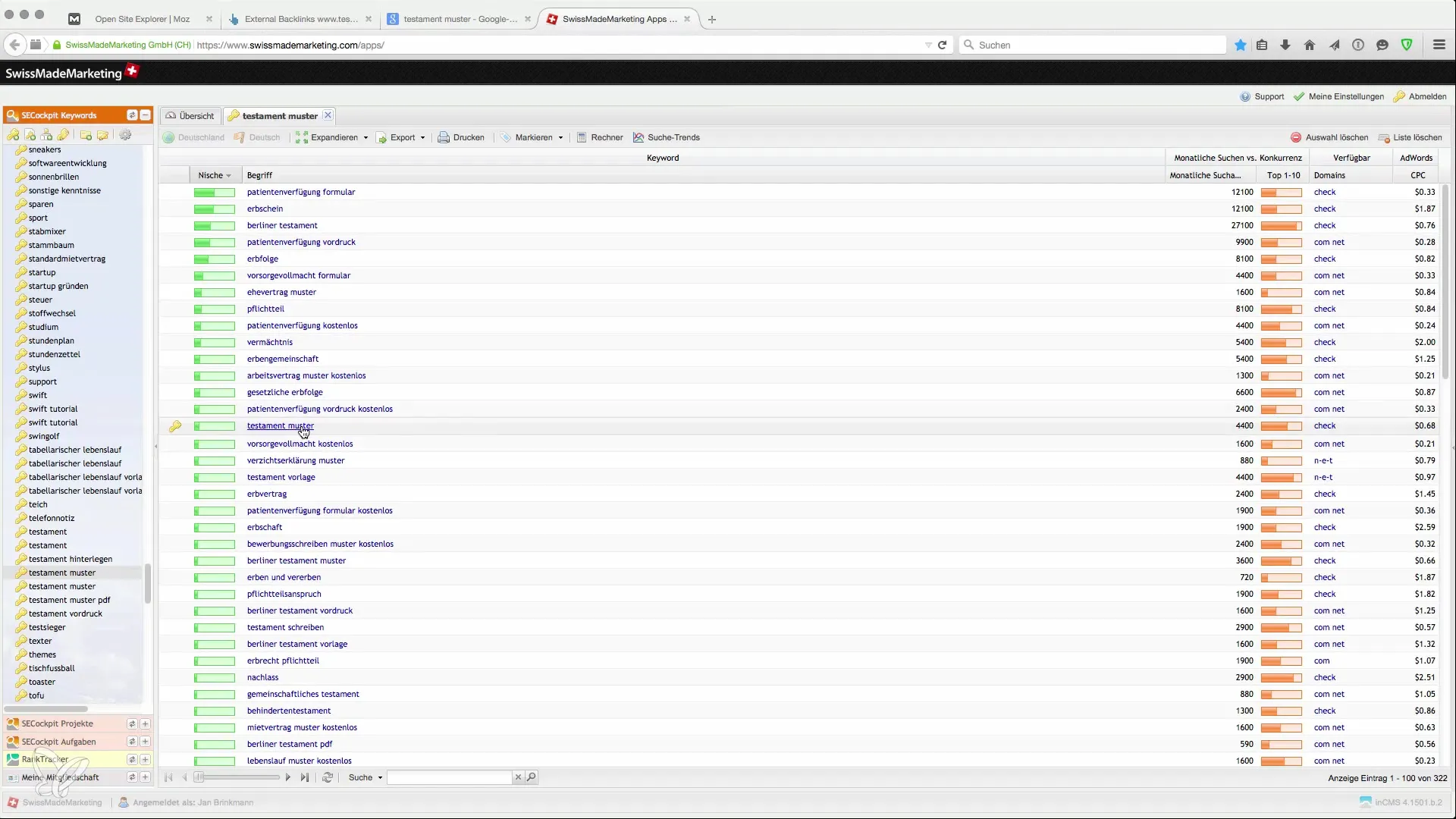
9. Strategic Planning
Based on these analyses, you can develop strategies to increase your visibility. Consider how you can leverage your competitors' weaknesses and highlight your own strengths.
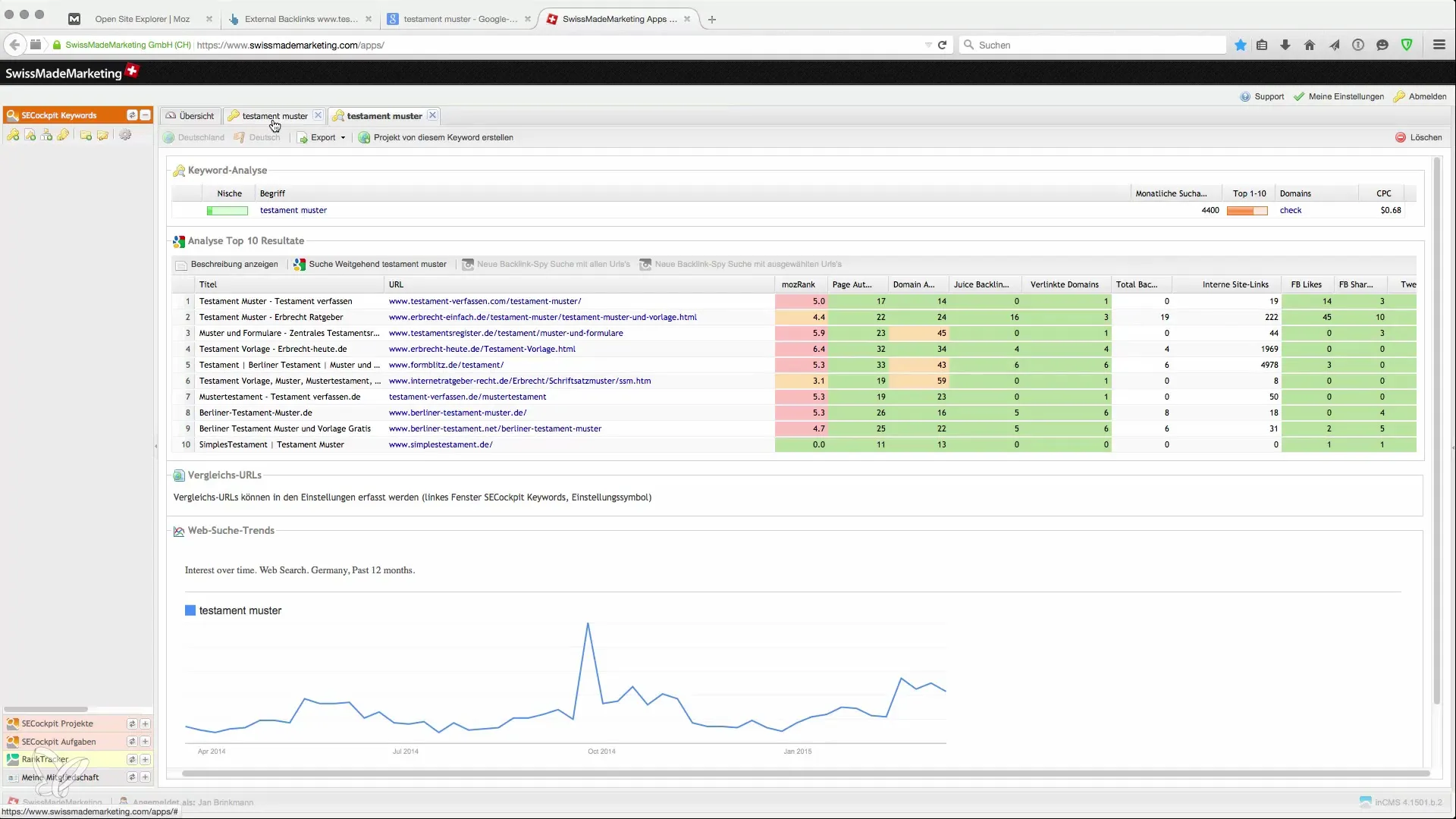
Summary
Competitive analysis is an indispensable step to being successful on the internet. By using various tools and techniques, you will be able to make informed decisions and optimize your online strategy.
Frequently Asked Questions
How do I find the right keywords?Use tools like the Google Keyword Planner or observe the search results of your competitors.
What should I consider in the meta description?The meta description should contain the main keyword and clearly describe what users can expect on your page.
How important are backlinks for my ranking?Backlinks are crucial for your website's authority and significantly influence your ranking in search engines.
Which tools for analyzing competition do you recommend?Tools like “SEO Analyzer,” “Open Site Explorer,” and “Moz” are useful for obtaining comprehensive data.
How often should I analyze my competition?Conduct regular analyses to identify new trends and adjust your strategy.


